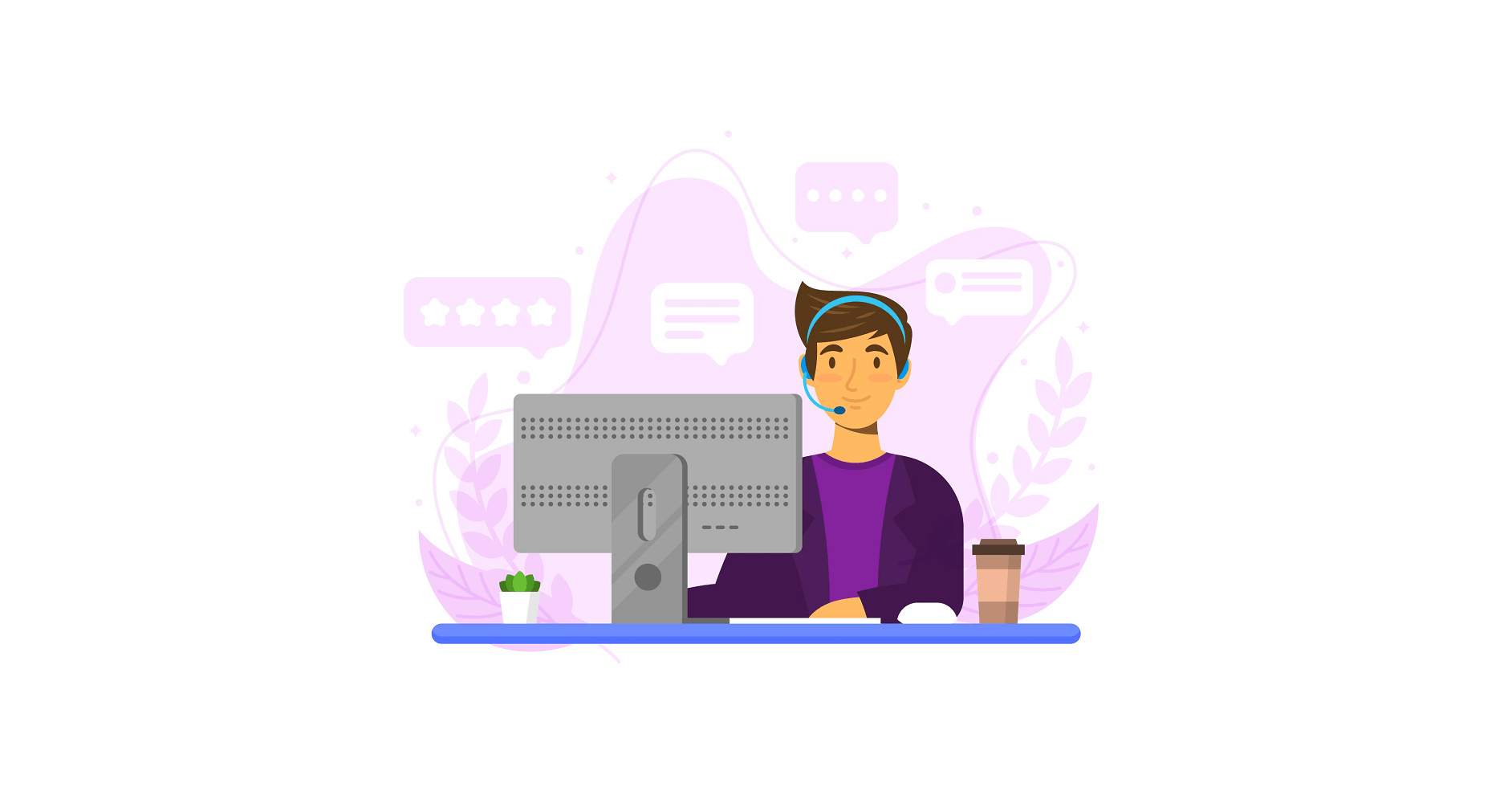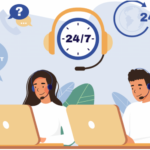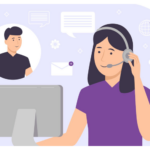Introduction
Ninety percent of businesses use cloud technology for applications such as phone systems, call-center software, cloud IVR solution, file sharing and storage, and CRM solutions.
A cloud IVR system is one of the first measures to consider when shifting company communication to the cloud.
Cloud-based communication systems provide several advantages over premise-based communication solutions, including lower costs, less maintenance, and higher security requirements.
IVR systems currently do much more than just route calls and keep customers in line. In this article, we’ll look at some of the essential benefits of cloud IVR solutions.
Our IVR software saves time and allows companies to reach customers 24×7. Our Ezsip call center solution enables clients to complete basic transactions (pay bills, monitor deliveries, make bookings, etc.)over the phone without the assistance of an employee.
As a result, they will start receiving faster responses, allowing you to save money.
What is IVR System?

Would you want to learn more about how an IVR cloud solution can revolutionize your business? Reach us right away at info@ezsip.io or request a free trial.
Every organization needs to prioritize customer service because customers have inquiries that require quick and efficient responses.
The most frequent (and quickest) way to contact a company would be via phone, and even modest organizations might struggle to manage a tremendous amount of calls.
That’s where an Interactive Voice Response (IVR) system comes in. A call-handling system manages incoming customer calls through voice or calling, and corporate staff can also leverage it for internal use.
On an IVR system, customers can choose from a restricted menu of options, and if the desired category is not available, the system can transfer them to an agent.
IVR delivers calls to the departments of choice by selecting numerous alternatives, saving time and increasing the customer experience.
You can create Interactive Voice Response (IVR) systems digitally or by manually pre-recording messages.
These systems intend to sort out queries, minimize waiting time, and inform staff about the problems or questions they need to address over the phone, thereby improving their performance.
The caller can engage with the IVR system by dialing the numbers or simply responding by repeating one of the supplied alternatives.
A well-designed Interactive Voice Response system is a beneficial addition that may significantly improve business performance and minimize expenses.
Types of IVR

IVR comes in two different assortments:
Outbound IVR
Outbound IVR allows businesses to engage consumers automatically through a variety of communication channels, including voice calls, SMS, and emails.
Firms that rely extensively on outbound sales efforts have warmly accepted this technology since it can enhance other call features like auto dialer software.
For instance, businesses can use outbound IVR to automatically notify customers of upcoming appointments, payments, or promotions.
Benefits of Outbound IVR
- Excellent customer service
- Saves a tremendous amount of time & money
Inbound IVR
When a call comes in, inbound IVR tries to anticipate the caller’s needs and provides them with options for obtaining the information they want.
Inbound IVR greets most customers who call a company and offers a self-service menu that allows them to access various services or departments by selecting a different voice command or touch-tone digit.
Customer support, answering frequently asked inquiries, and inbound sales are all popular uses for inbound IVR.
Benefits of Inbound IVR
- Call routing that is intelligent
- Analytical value and cost-effectiveness
How Does IVR Work?
The capability of your IVR will be determined by the type of system you choose.
A simple IVR system saves businesses time by assisting in workforce organization and enhancing the chances of relatively quick response rates.
When a customer pushes a certain number on their keypad, the basic IVR system employs a technique called Dual-Tone Multi-Frequency signaling to decide where the call should go.
For most businesses, this is the most cost-effective alternative.
As organizations seek better methods to manage calls in the era of customer experience, complicated IVR systems are becoming increasingly popular.
These cutting-edge technologies may assist with gathering client information for analysis via AI data management, as well as ensuring firms are compatible with the latest updated privacy and security rules by obtaining consent (e.g., in accordance with GDPR) before a conversation begins.
Natural language processing software, or conversational AI, is also used in advanced IVRs to listen to a customer’s conversation and reroute their call depending on what they hear.
This enables the IVR system to better grasp the customer’s wants and route the call accordingly.
Benefits of IVR Solution

Despite the fact that IVR systems are automated and give callers limited alternatives, they have numerous advantages.
Some of the most important benefits of using IVR software are:
1. Call Transfer
Call forwarding transfers inbound calls to the same agent across many phone lines/devices, avoiding the need for the caller to hang up and dial several numbers separately.
If an agent fails to answer their desk phone, the call is sent to their smartphone, then to their home phone, then to voicemail, and finally to another agent.
Call forwarding, in particular, allows distant teams to collaborate while also increasing flexibility and mobility for all agents.
2. Drag and Drop Call Flow Design
Using the drag-and-drop call flow (call route) design, managers may easily update and change call pathways inside the IVR system.
It simplifies the call flow design process and strategy by allowing administrators to make modifications like adding new agents, phone numbers, or pre-recorded menu items without having to write complex code or create long if-then scenarios.
3. Call Queuing and Ring Groups
By directing calls to the right departments and agents, call queues to help your firm stay organized set and handle the daily volume of traffic.
These agents and departments are organized according to their skills, training, and responsibilities within your firm to ensure that consumers receive the support they seek without having to wait in line for too long.
Every few minutes, call queues should provide updates such as the caller’s current position in line and/or the projected caller wait time.
When a caller dials a single phone number or extension, a ring group of connected agent phone numbers rings simultaneously.
The phone call is routed to the first agent who answers it.
4. Automation
The caller is guided along the pre-programmed call path via automation, allowing them to contact an agent or obtain the necessary information.
Based on the information provided by DTMF tones or speech, as well as the call’s purpose as determined by AI and call processing, the call is automatically routed to the right location.
This automation eliminates the need for a live human to manually route calls, hold callers, or take messages.
5. Recordings of Phone Calls
Every time you speak with a live agent, you may be asked if you mind if this call is recorded.
Call recording is an important commercial feature of the IVR system for any firm having a call center.
These call logs can provide valuable information about how your clients engage with your IVR system and speak with your live senators.
This expertise may assist you in improving and optimizing your IVR process, resulting in a better system over time.
You can use call recordings to strengthen your system and train new contact center employees or those who need to improve their customer service skills.
6. Self-Service
This information delivery capability also relates to supporting clients in attaining what they seek.
One of the most beneficial elements of the IVR system is that consumers do not need the aid of operators to carry out operations.
You’re probably familiar with this self-service approach on other platforms. Don’t you like making online purchases, making movie bookings, and even sending personal gifts without conversing with anyone?
Even yet, while phoning a business, callers strive to avoid it. Why? Customers can use the IVR system to search for information or perform transactions, just like they would on a website.
The only thing we find strange is talking about technology instead of using it. If you can’t shake your fear, you’ll realize that this is what we want for you.
7. CRM Integrations
Third-party CRM systems provide vital caller and customer information as well as insight into each customer’s entire history and relationship with your firm.
By integrating CRM tools into your IVR systems via automated CRM software call pops, which “pop up” instantly when a consumer calls your business, you can offer your agents quick access to caller information.
These call pops provide vital information such as:
- Date of last contact
- Purchases made in the past
- Notes from other agents
- Contact Information Order Specifics
Epilogue
Ezsip offers a variety of dialer software options to match your company’s demands, including a manual dialer portal and an automated dialing system.
Both provide simple connectivity with your existing systems, cutting-edge capabilities, and simpler compliance administration, allowing you to boost your contact center operations without stress.
At Ezsip, you’ll discover all of the standard dialer functions and some extras. Here are just a few of the significant differences between our auto dialer software and others on the market today.
Would you want to learn more about how an IVR cloud solution can revolutionize your business? Reach us right away at info@ezsip.io or request a free trial.






























